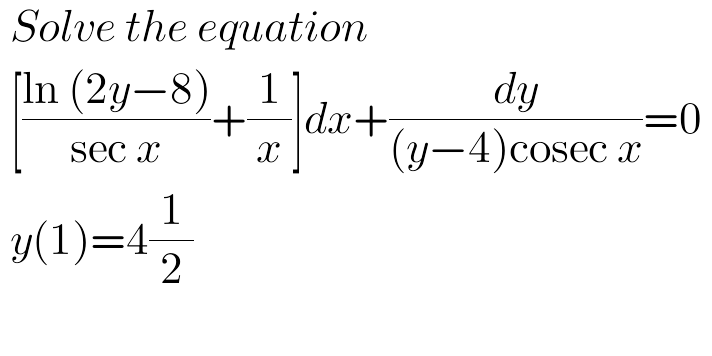
AlgebraQuestion and Answers: Page 277
Question Number 87724 Answers: 1 Comments: 0
Question Number 87656 Answers: 1 Comments: 3
Question Number 87625 Answers: 2 Comments: 0
Question Number 87598 Answers: 0 Comments: 1

Question Number 87586 Answers: 1 Comments: 0
Question Number 87581 Answers: 2 Comments: 1

Question Number 87553 Answers: 1 Comments: 0

Question Number 87533 Answers: 3 Comments: 2

Question Number 87492 Answers: 1 Comments: 0
Question Number 87398 Answers: 0 Comments: 5
Question Number 87382 Answers: 1 Comments: 0
Question Number 87379 Answers: 1 Comments: 2
Question Number 87321 Answers: 0 Comments: 0

Question Number 87313 Answers: 1 Comments: 4
Question Number 87302 Answers: 1 Comments: 3
Question Number 87253 Answers: 1 Comments: 0
Question Number 87224 Answers: 1 Comments: 7
Question Number 87130 Answers: 0 Comments: 5
Question Number 87093 Answers: 0 Comments: 6
Question Number 87050 Answers: 0 Comments: 3
Question Number 87028 Answers: 0 Comments: 0
Question Number 87009 Answers: 2 Comments: 0
Question Number 86924 Answers: 1 Comments: 0

Question Number 86903 Answers: 0 Comments: 0

Question Number 86825 Answers: 1 Comments: 1
Question Number 86779 Answers: 1 Comments: 0
Pg 272 Pg 273 Pg 274 Pg 275 Pg 276 Pg 277 Pg 278 Pg 279 Pg 280 Pg 281
